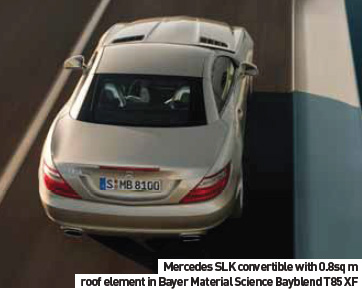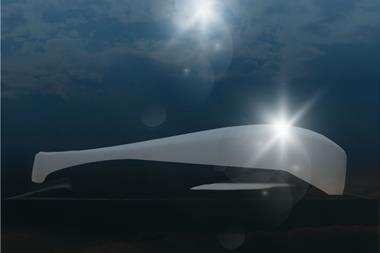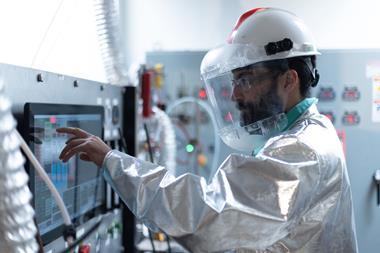The advance of engineering plastics such as PA6 and PA66 polyamides, the improvement in touch and feel, and the development of engineering materials with high heat tolerance, rigidity, impact strength and corrosion resistance, has led to a swathe of materials—collected under the heading of “plastic”—becoming indispensible to auto manufacturers.
Among their advantages is the ability to produce complex-shaped components in a single production process, rather than a succession of cutting, bending and welding activities, which helps to cut costs. They are also generally much lighter than metallic alternatives, spreading from interiors to external, underfloor and underhood applications in a seemingly inexorable advance.
Reduced demand?
However, a recent benchmarking exercise by French company A2Mac1, entitled Polyamide Report 2011—PA6 and PA66 in Systematic Benchmarking, found that between 2004 and 2010 almost all plastics saw a strong decline in average use per car. Polyamide (PA) fell from an average of 20kg per vehicle in 2004 to around 14kg, an overall reduction of around 30%. Polypropylene (PP) slipped somewhat less, from 62 to 60kg/car, but polyurethane (PUR) seemed to recede even more, from around 18kg/car to just 10kg—over 4% less. But that analysis did not include seats. “Seats have become more comfortable, more stable and safer in the last 25 years,” says Oliver Herkert, manager of European communications at Johnson Controls. “They first became heavier—electrical seat adjusters, for example, increased weight. Now, seats are becoming lighter while maintaining or even increasing stability and comfort.” Johnson Controls uses PUR, PP and PA, reinforced with both long and short glass fibres to improve mechanical properties. “Talc is not used as a reinforcement but rather to create thinner wall thickness.” First, second and third row backrests are made of engineering plastics but metal is also employed and there is a trend, in this area, to perhaps make more use of it, in the form of high strength special steels that allow thinner and thus lighter components.
 Innovation in seating
Innovation in seating
“Innovative solutions will make the seat lighter as well as more comfortable,” Herkert continues. “For example, Johnson Controls has formed a development relationship with British luxury mattress manufacturer Harrison Spinks to integrate pocketed coil spring mattress technology into an automotive seat concept called ComfortThin.” This concept will be available from model year 2015. It uses up to 100 individually-pocketed metal springs in the backrest. Johnson Controls claims that ComfortThin seats will be up to 20% thinner than foam-padded equivalents. Despite the recorded decline in plastics in auto construction, Johnson Controls believes that this pattern will not be maintained.
“Polymers have growth potential; the proportion of plastics in the car will grow in the future.” says Herkert. Johnson Controls recently announced a joint project with the Fraunhofer Research Institution for Polymeric Materials and Composites in Germany. “The joint research and development initiatives will focus on developing polymer systems for the automotive industry that are recyclable, repairable, and have excellent mechanical properties.”
Recycling
This is part of the point; despite their questionable environmental reputation, plastics are often more recyclable than metals. They can be recycled into more of the same—a fender, for example, can be reprocessed and recovered material used in another fender. Recyclate can be turned into sound or heat insulation, or into fabrics. And reuse is not restricted to plastics recovered from cars. Ford Motor Company has announced that its 2012 Focus Electric will be equipped with seat fabrics made from a hybrid blend of recycled PET (polyurethane) plastic bottles and postconsumer waste, produced by US company Unifi, Inc, with the brand name Repreve.
But the fact remains that plastic use has declined and not just in Europe: the same is true in Asia where there is actually less PA used and the decline in PP was found to be even sharper. The question is: does this indicate a longerterm trend or is it more like a pause for breath before the next leap forward? Some recent developments indicate that the latter may well be the case. Developments in production technology mean that plastics’ workability advantage is being spread progressively further.
New technologies and processes
In 2011, Rochling Automotive announced that it was producing cowl grilles and engine cover bulb seals in a single-shot process. Previously, hollow chamber seals could only be produced by dedicated extrusion. Rochling says that the complete procedure can now be substituted by PIT (projectile injection technology), within the same tool used for moulding the carrier. The two-component process chemically bonds an EPDM-bulb seal with a PP-carrier and is designed to eliminate the risk of the parts becoming detached. The company says that this can reduce weight by 30% and save 10% production costs. This process has been tried and tested in series production in a high-volume application on the new Ford C-Max.
MuCell: CoreTech System (Moldex3D) Co Ltd. and Trexel, Inc. have announced they have entered into a Joint Development Agreement for enhancing MuCell process productivity. Mould maker and moulder Muerdter, of Mutlangen, Germany, is running a Krauss Maffei MC 5400-17200, currently the world’s largest MuCell process-enabled injection moulding machine. MuCell involves the introduction of precisely-metered quantities of atmospheric gases (nitrogen or carbon dioxide) in the plasticising unit of an injection moulding machine, which creates a microcellular material structure in the end product.
High-fibre PA: Grivory GVX is a polyamide with high glass fi bre content. Fischer Automotive Systems uses Grivory GVX with 50% glass fibre content in the arms and a facing support of the cup holder used in Porsche Panamera models. Leopold Kostal Company uses 65% glass fibre content Grivory GVX-65H in place of die-cast zinc to produce shift levers for automatic gearboxes.
Cold Plasma for lightweight composites: Plasma systems manufacturer Plasmatreat GmbH, of Steinhagen, Germany, claims its Openair cold, atmospheric pressure plasma pretreatment technology achieves required surface modifi cation of honeycomb polypropylene (PP) panels without hazardous chemicals. Its rotary nozzle technology enables pretreatment over a width of up to around three meters at processing speeds of 25m/min and offers the possibility of using lower-cost materials such as recycled plastics for composite cores. IMHP technology cuts IM cycle time: DuPont has announced a new IMHP (In-Mould Hold Pressure) technology that is claimed to reduce cycle time of semi-crystalline thermoplastics. DuPont’s IMHP process applies the required hold pressure within the mould, which enables the two phases of applying hold pressure and dosing to be carried out simultaneously.
Fibre-reinforced composites project: Johnson Controls, Evonik Industries, Jacob Plastics GmbH, Toho Tenax GmbH and the Technical University of Aachen are partners in the threeyear CAMIMSA (Carbon fibre Amid Metalbased Interior Structural component using a Multi-material Approach) project, to develop a comprehensive solution for the replacement of steel and light alloys in the automotive industry. Composite solutions save weight: Combining metal and high-tech plastics can help to reduce a car’s total weight by around 20%, according to specialist chemicals company Lanxess. Steel or aluminium sheets encased with glass fibre-reinforced PA6 are already in use and further weight reduction can be achieved with hybrid nylon composite sheet, consisting of Kevlar or special carbon fibres, embedded in a thermoplastic matrix such as PA. Plastics with protection against electromagnetic interference offer significant advantages for vehicle interiors, as they can be shaped as needed for optimal use of space.
A lighter Pulse: Audi’s latest Q3 model features interior equipment made from Styron Automotive’s Pulse GX50 engineering resin, a PC/ABS (polycarbonate/acrylonitrile butadiene styrene) blend. Finished parts made of the new material are approximately three percent lighter and seven percent cheaper than those made of Pulse A35-105.
A lighter filler: French plastics component producer Mecaplast has used a TPO compound containing a mix of talc and 10% Hyperform HPR-803i, produced by Milliken, to mould prototype B-pillar covers that weighed 524g, 7% less than existing commercial parts. The compound has a density of 0.98g/cm3.
Dow gets heavy with lightweighting: Carbon fibre composites (CFC) have the potential to reduce vehicle weight by more than 40%, compared with steel. Dow Automotive’s new generation of Voraforce Ultra Fast Cure, low viscosity, thermoset resins are compatible with carbon fibres, capable of sufficient injection time and demould in less than five minutes in conventional high pressure resin transfer moulding.
Ford has also introduced new handles on the interior closing system of the Kuga and C-Max, followed by the 2011 Ford Focus five-door and station wagon models. Ford uses a standard injection moulding tool in order to integrate a grab handle into the interior trim panel; a sequential slider system enables additional functionality. The primary slider creates an additional cavity for the handle; the secondary slider pushes the primary into position and locks it in place. After the part has been injected and cooled, the secondary slider is activated and releases the primary, clearing the cavity; the tool cavity is removed from the part at the same time. This slider set-up allows production of an integrated handle with smooth radii and without corner splitlines, which improves its functionality and appearance.
Polycarbonate saves weight over glass and should offer the same clarity but the experience has been that outgassing, leading to fogging of headlamp lenses, has been a problem. It has been compounded by increasingly complex and smaller headlight shapes. Last year, BASF introduced its Ultradur High Gloss B4570 PBT (polybutylene terephthalate) grade, which is intended for headlight bezels. BASF says that new material offers high gloss and extremely low outgassing at temperatures up to 160°C, over an extended period.
How to handle a polymer
Interiors are one thing; underbody, underhood and loadbearing structures are another matter. One of the challenges thermoplastics face in external and loadbearing applications is rigidity over large areas. The solution on Mercedes’ new SLK could indicate that this is a thing of the past. The base version of the convertible is equipped with an electrohydraulic vario roof system with a 0.8sq m element, which is made of Bayer Material Science’s Bayblend T85 XF. The PC+ABS roof element, manufactured by Peguform GmbH in Bötzingen, Germany, is claimed to exhibit high energy absorption in crash situations and retains resilience even at temperatures well below freezing. Its temperature of deflection under load of 127°C (0.45 MPa, ISO 75-1, -2) enables the unreinforced material to satisfy the high thermal requirements placed on horizontal bodywork parts. Bayer Material Science further claims that the material’s high chemical and stress-cracking resistance is coupled with 10 to 15% better flowability compared with the standard material, enabling the production of large-area mouldings with low levels of stress and warpage, as well as high surface quality in short cycles.
Handling such large-area components, whether of plastic or other materials, is another challenge, one that ABB believes it has risen to. It has developed a new tool, made of carbon fibre, which is designed to move large-area components with greatly reduced flapping and vibration. “Carbon fibre is stiffer, lighter, more resilient and resistant, which means the robot can go faster and produce more parts,” says Toni Roda, productivity support manager, Asea Brown Boveri SA, DMRO Robotics. “It can handle big parts, such as complete car sides.” Conventional solutions have to wait till vibration stops before placing the part. “As this carbon fibre tool minimises flapping, it takes less time to position the component correctly,” he adds. There is also less stress on the part, leading to fewer failures.
Underhood, mechanical and bodywork
Under the hood, temperature-resistant thermoplastics are found just about everywhere outside the engine cylinders. Recent developments include the selection of a PPA-based polyamide from EMS-Grivory for the manufacture of a thermostat housing for the engine compartment by Fishman Thermo Technologies (Fishman TT), Misgav, Israel, for use in existing Mazda cooling systems. The specific formulations are PPS GF33 and the PPA-based Grivory HT1V-3 HY and HT1V-45 HY black grades. Key attributes were good heat stability, as the component has to function at temperatures ranging from -40 to 150ºC. The material’s performance has been achieved through heat modification of the material, which is also resistant to chemicals and hydrolysis. Sogefi Group has launched the industry’s first coil springs produced with composite material, which weigh up to 70% less than steel. Production of the FRP coil springs uses between 60 and 80% less energy.
Outside, Mazda’s new CX-5 crossover SUV has front and rear bumpers made of a new resin material, jointly developed by it and Japan Polypropylene Corporation. The resin has the same rigidity as conventional materials, but is much lighter. Parts manufactured with the new resin are thinner, which reduces material requirement; it can save up to 20% weight compared to conventional resins. Further, the reduced thickness allows for a shorter cooling period after moulding and, by using computer-aided engineering, the fluidity of the resin material has been optimised. Bumper moulding time has been halved to 30 seconds.
Suppliers across the range are getting in on the costreduction and raised convenience act. Songwon, a supplier of additives, has developed a range called OPS—One Pack Solutions—for additive delivery and dispensation. Dieter Morath, executive vice-president, sales and technical services, said that accurate dosing and elimination of pollution possibilities are among the drivers for the product. “There are no polymers without additives but the technical benefit is cost saving,” he said. “Other aspects include lower logistics costs, less warehousing and the replacement of maybe six or seven additives with just one.” Which means quality and consistency are well in the frame as well. “Additives conventionally come in 500kg bags, which are opened and discharged through supported ‘elephant trunks’ or emptied into the hopper from the top. Or they may come in 20/25kg polyethylene or paper bags. With paper, there is the risk of cellulose contamination. OPS doesn’t have these problems— and it eliminates explosion risks, as well.” As the mixture and dosages are controlled at the factory, Songwon’s solution ensures accurate dosing, which saves money and guarantees the flowability of the compound, leading to better quality products.
e-vehicles: challenge and opportunity
The emergence of e-vehicles is presenting new challenges and opportunities for polymers and their potential has been showcased in the BamBoo concept car, designed by Rinspeed, the Swiss design studio. Its inflatable roof, which was developed by Swiss company Tecnotex, is covered with water-resistant Skai Neptun, from the Nano Profile series of Konrad Hornschuch AG, developed especially for outdoor use. Skai EBamboo, which is 80% organic material— including bamboo—is used in the footwell and trunk. Front and rear seats are upholstered in breathable Laif Cosit. Ticona produced components made from Celstran tapes for the underbody, tailgate and parts of the interior. Hostaform MetaLX is used in the roll bar and the steering wheel. The roller interior covers concealing the glovebox are made from Hostaform polymer and glass fibres. The electrically powered car has a steel chassis with a composite body combined with the use of polymer plastic materials. AzkoNobel Automotive & Aerospace Coatings provided the colours and integrated stickerfix ultra-thin high-tech adhesive into the design, and Henkel supplied the structural foams, sealants and adhesives.



































